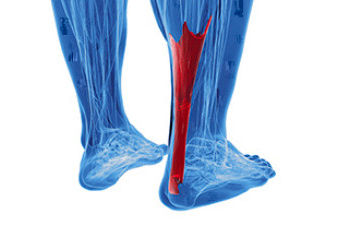
Achilles tendon injuries involve damage to the strong band of tissue connecting the calf muscles to the heel bone. These injuries can range from inflammation to partial or complete tears. Common causes include overuse, sudden increases in activity, tight calf muscles, or improper footwear. Symptoms include heel pain, stiffness, swelling, or a snapping sensation during movement. Risk factors include intense physical activity, poor conditioning, and certain medical conditions. A podiatrist can diagnose the injury through examination and imaging, then recommend treatments such as rest, stretching, or orthotics. If you are experiencing pain in the back of the heel, it is suggested that you visit a podiatrist for an accurate diagnosis and effective treatment.
Achilles tendon injuries need immediate attention to avoid future complications. If you have any concerns, contact one of our podiatrists of Whitestone Podiatry PC. Our doctors can provide the care you need to keep you pain-free and on your feet.
What Is the Achilles Tendon?
The Achilles tendon is a tendon that connects the lower leg muscles and calf to the heel of the foot. It is the strongest tendon in the human body and is essential for making movement possible. Because this tendon is such an integral part of the body, any injuries to it can create immense difficulties and should immediately be presented to a doctor.
What Are the Symptoms of an Achilles Tendon Injury?
There are various types of injuries that can affect the Achilles tendon. The two most common injuries are Achilles tendinitis and ruptures of the tendon.
Achilles Tendinitis Symptoms
- Inflammation
- Dull to severe pain
- Increased blood flow to the tendon
- Thickening of the tendon
Rupture Symptoms
- Extreme pain and swelling in the foot
- Total immobility
Treatment and Prevention
Achilles tendon injuries are diagnosed by a thorough physical evaluation, which can include an MRI. Treatment involves rest, physical therapy, and in some cases, surgery. However, various preventative measures can be taken to avoid these injuries, such as:
- Thorough stretching of the tendon before and after exercise
- Strengthening exercises like calf raises, squats, leg curls, leg extensions, leg raises, lunges, and leg presses
If you have any questions please feel free to contact our office located in Whitestone, NY . We offer the newest diagnostic tools and technology to treat your foot and ankle needs.
